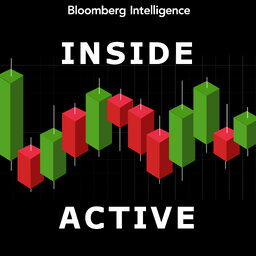Astoria’s Davi on Mitigating Concentration Risk
Adding the profitability factor to the value factor can filter out value traps and help value stocks outperform the market, according to Bloomberg Intelligence. In this episode of the Inside Active podcast, host David Cohne, BI mutual fund and active management analyst, along with co-host Christopher Cain, BI’s US quantitative strategist, spoke with John Davi, founder, CEO and chief investment officer of Astoria Portfolio Advisors about the company’s systematically active ETFs, including the Astoria US Equal Weight Quality Kings ETF (ROE), and the long-term value of quality stocks. They also discussed why equally weighting stocks can mitigate concentration risk, combining multiple factors can improve risk-adjusted returns and why adjusting factor weights based on valuation is crucial. This podcast was recorded on Feb. 24.
 Inside Active by Bloomberg Intelligence
Inside Active by Bloomberg Intelligence


